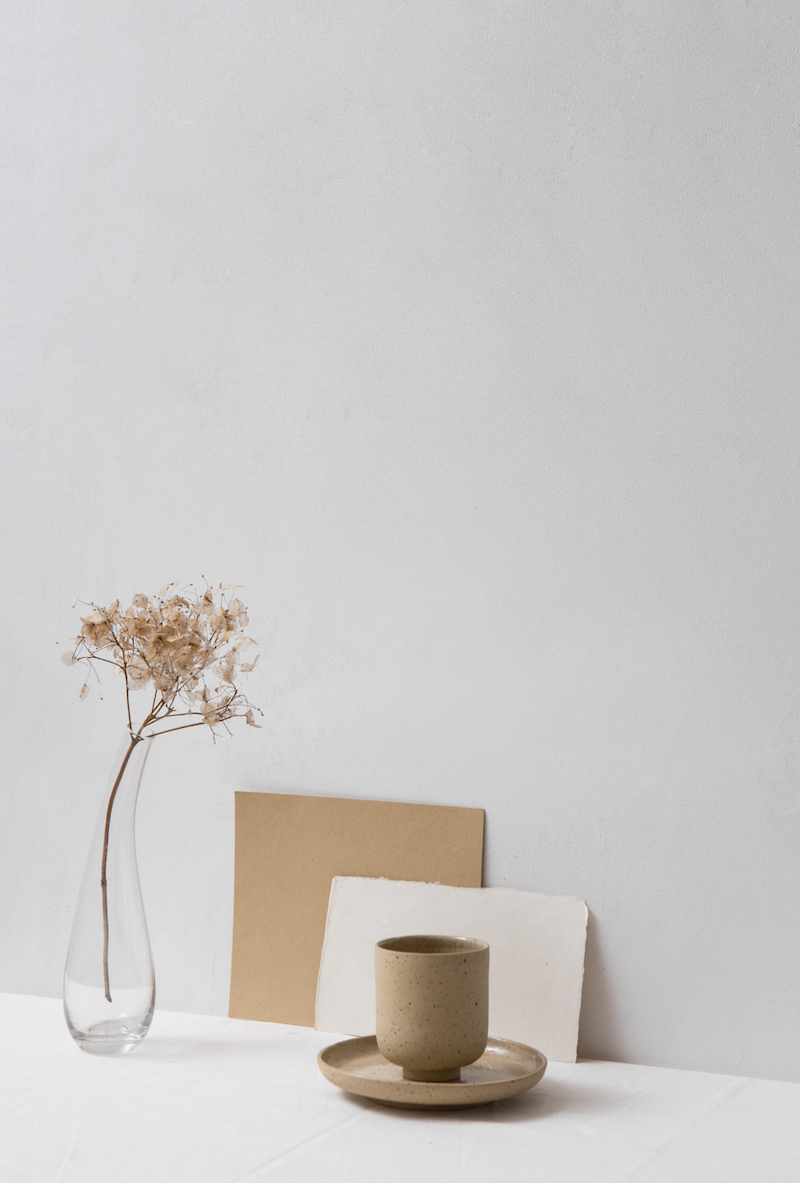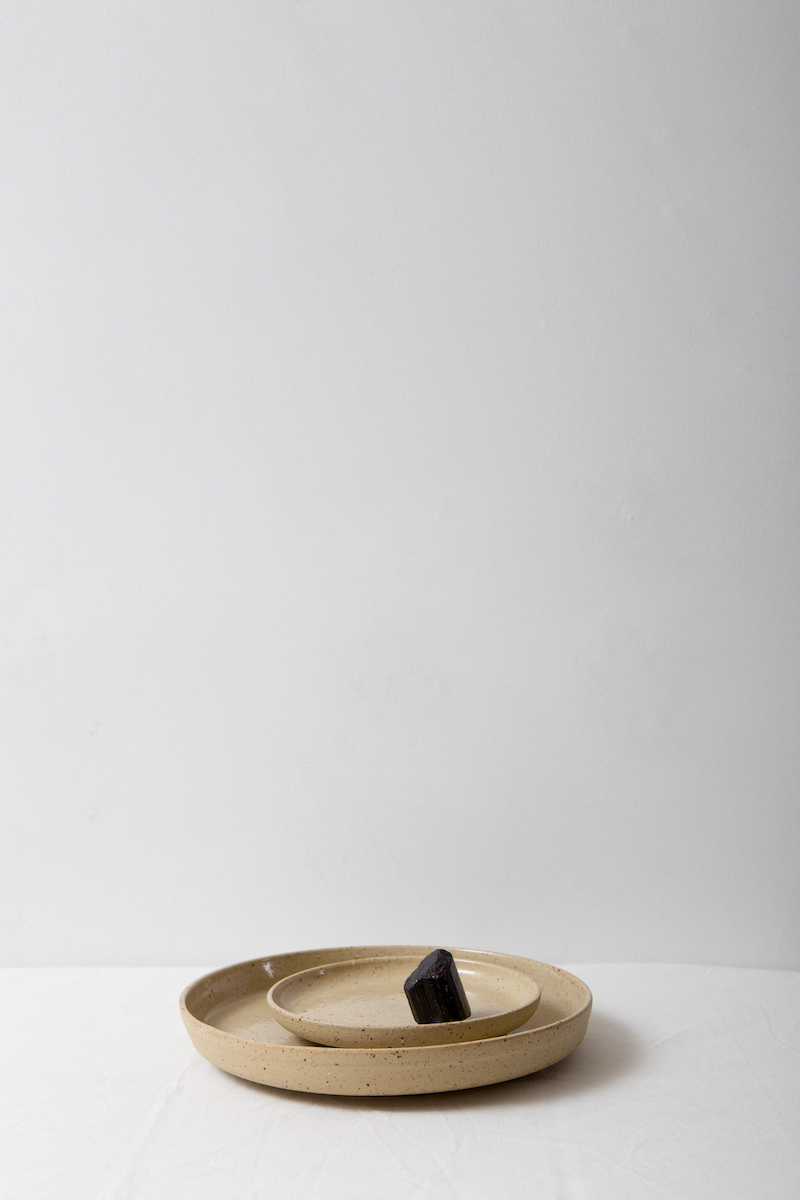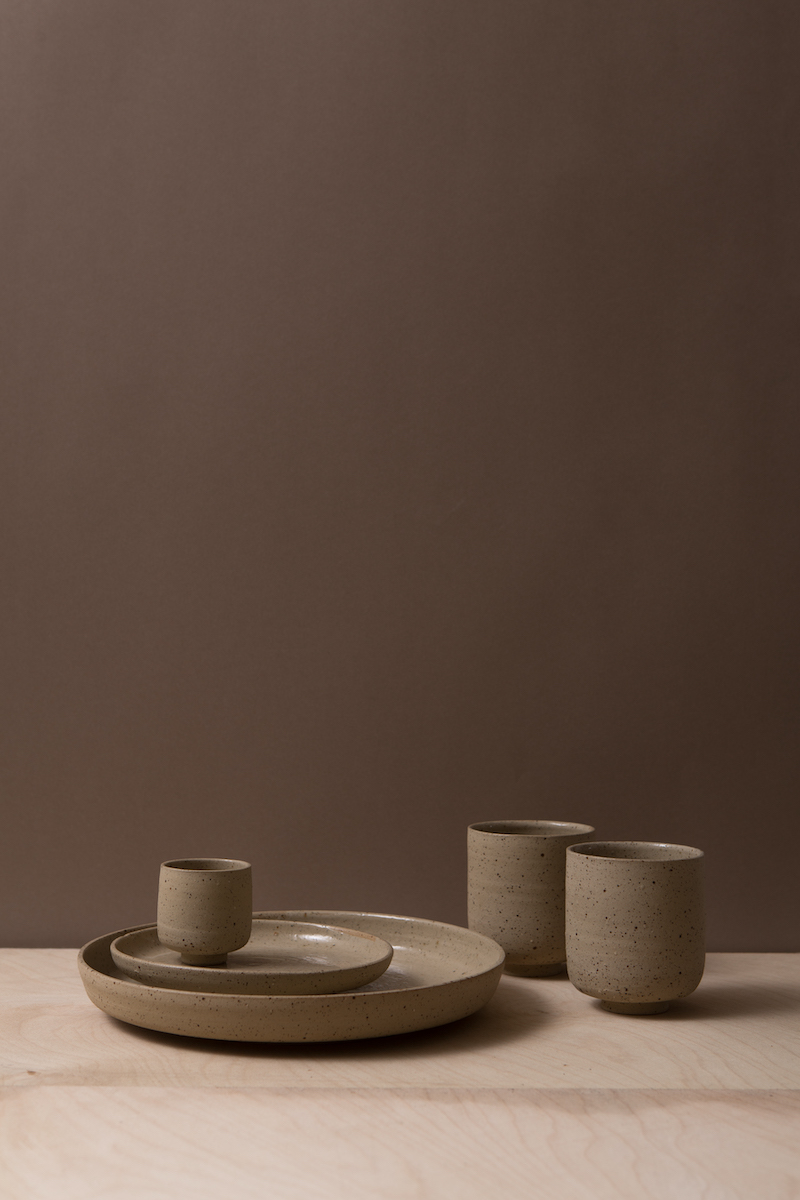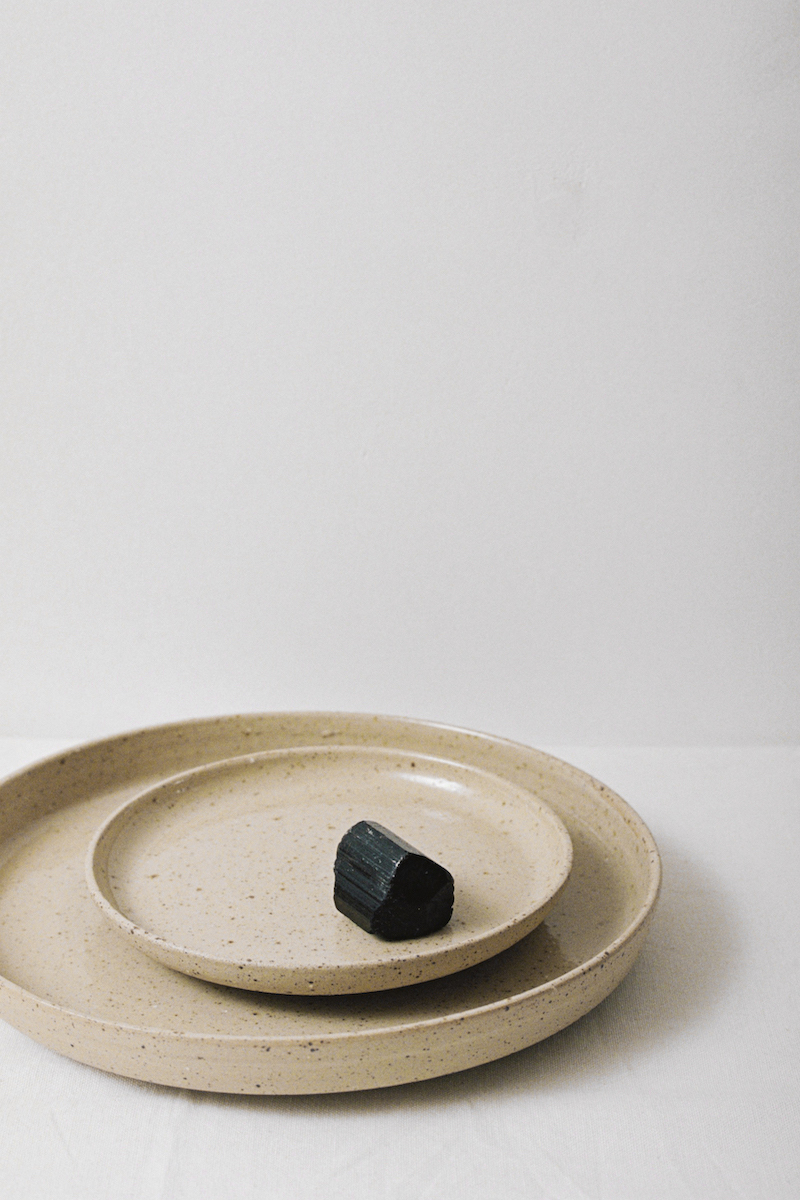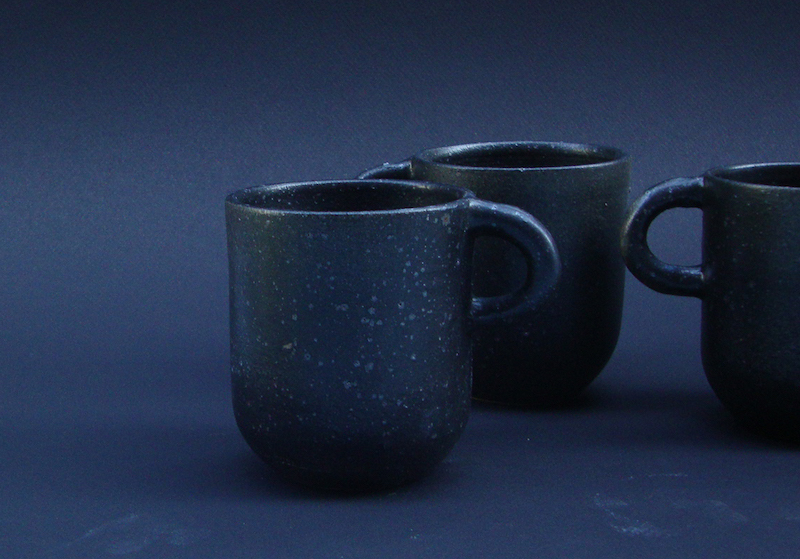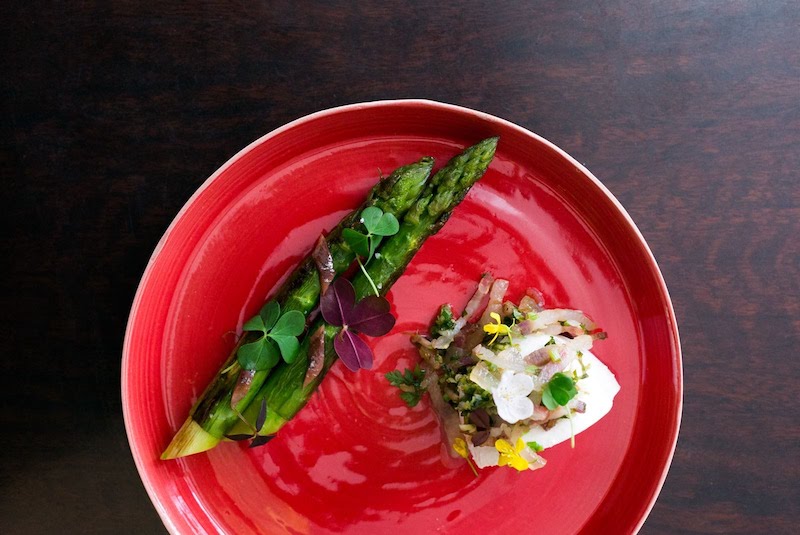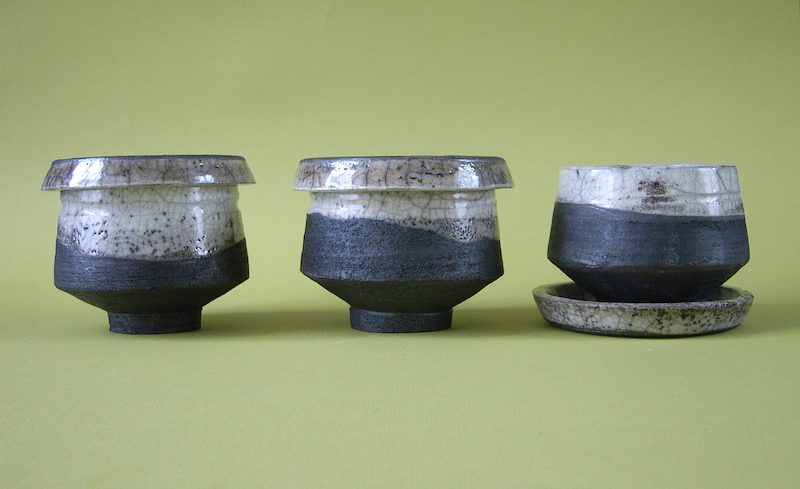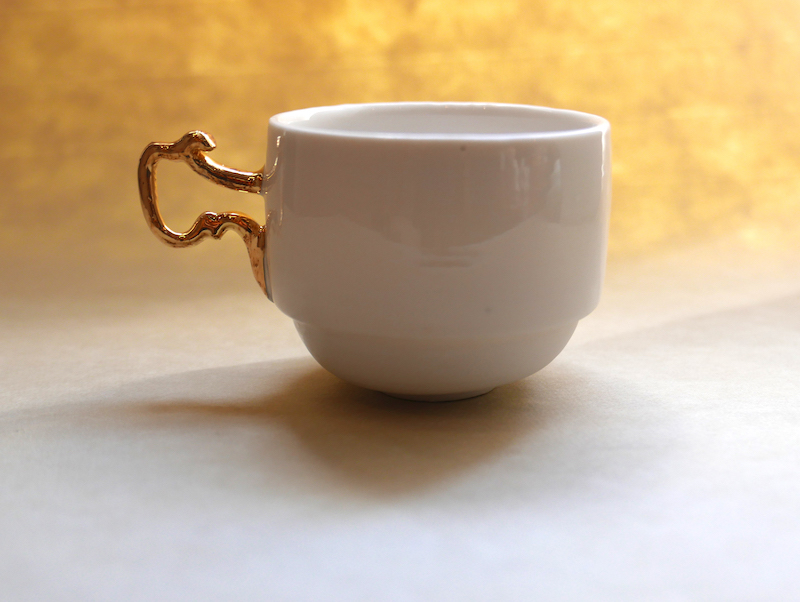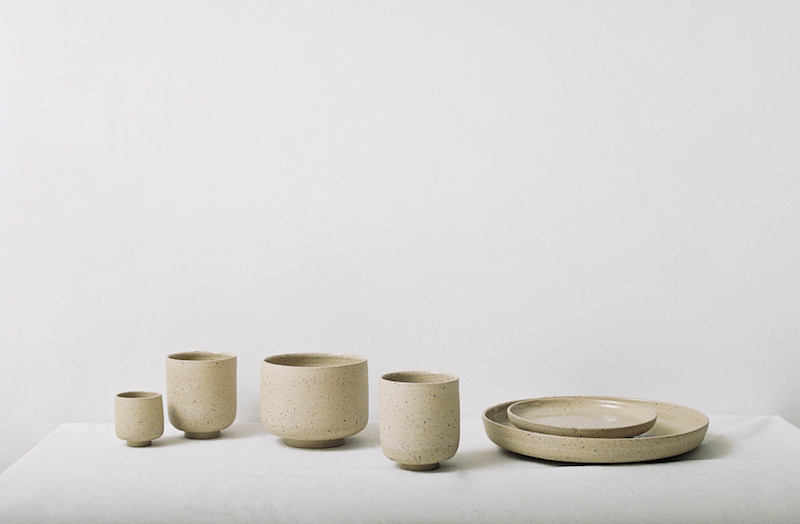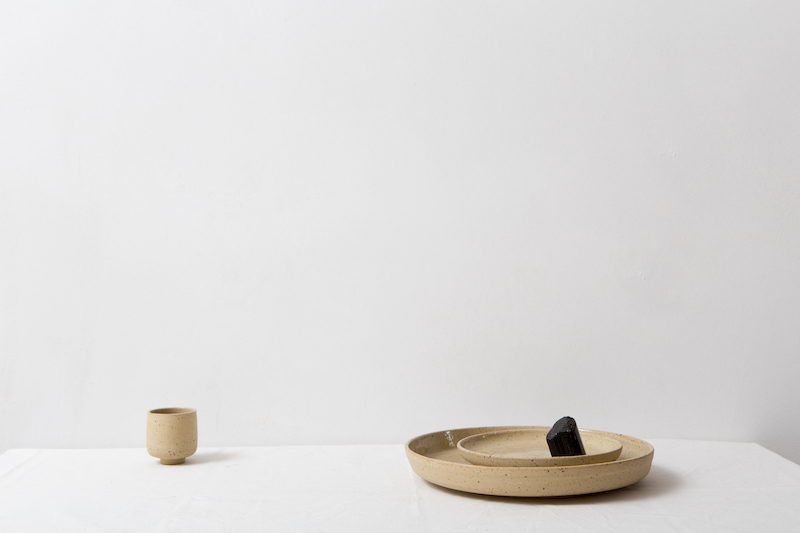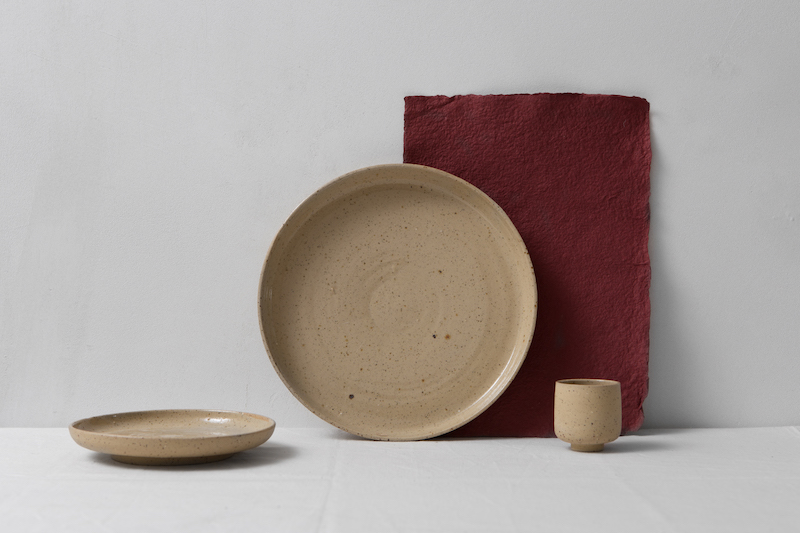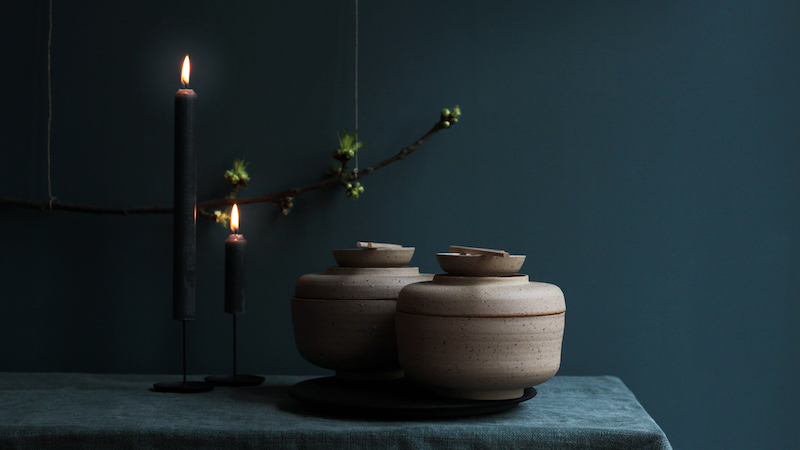maintenance & more about ceramics
MAINTENANCE
All our products are dishwasher- and food safe.
Even our products that are unglazed do not absorb water, because we fire at a very high temperature (1240ºC or more) that the clay shrinks as a result, contracts so much that it "sinteres", or petrifies. That is why this type of ceramic is called "stoneware", more detail of which below.
Our glazes do not contain lead, cadmium or other (possibly) dangerous metals traditionally used on ceramics.
Ceramics we have produced that have been washed in the dishwasher for 10 years still look as they did when new. Only some matte glazes can show slight signs of use, albeit not dramatically.
Items treated with gold or silver "luster" lose their decoration after having been in the dishwasher about 500 times, before which the decoration gradually fades. Therefore, as stated in the product description, wash items with gold or silver decoration by hand.
Because ceramics (like almost everything else) expand from heat and shrink from cold, it is not wise to place a cold dish in a hot oven or place a preheated plate on a very cold surface. Our ceramics are oven-resistant (it has been fired, after all), but not temperature-shock resistant. Also, although the microwave heats the contents and not the ceramic itself, we recommend not to heat our ceramics too extremely when microwaving
Do not stack the items roughly or too densely together: stoneware does not "chip" easily (flakes off the surface), but it can break.
GENERAL
Ceramics is the collective term for fired clay. Clay heated above about 600ºC irreversibly turns into ceramic. Below 500º it hardens, but remains water soluble (this is how we recycle our unfired clay: it is dissolved in water, then thickened to return to clay).
The higher the temperature, the stronger the resulting ceramic. Between 1000º and 1200º clay becomes hard but remains somewhat porous. This is called earthenware. The colours of earthenware are often brighter, and its inherent porosity can be useful, for example when used for tagines or plant pots.
But due to this brittleness we do not produce earthenware ourselves, as it renders it unsuitable for crockery (it chips easily and is not dishwasher safe).
Above 1200º clay starts to “sinter" (i.e. vitrified, petrified) in such a way that it becomes watertight and rock hard. This is called stoneware. In the case of porcelain (a type of clay made of various ground rocks) it even becomes translucent: if you hold (thin) ceramics up to the light and it lets light through, it means it is porcelain.
Some clays melt when fired at such high temperatures. We use clay sourced from Germany, which can withstand such intense heat. Most Dutch clay cannot tolerate such heat because Dutch soil tends to be rich in iron, which gives it its reddish colour (terra cotta, for example, is clay with iron oxide: rust makes the colour). The iron content makes the clay more likely to melt or deform when fired.
Glaze is a layer of glass that is applied over the clay, both as a protective surface (and to make washing easier), and as a decorative layer. Ceramics do not have to be glazed though, and may be left unglazed if preferred.
The composition of glaze is such that it melts at the same temperature as the clay sintered, so melding to the surface, but not so that it liquefies and melts off the item.
Interestingly, the composition of glaze is not so different from that of clay, only the proportions differ. These ratios can influence the melting temperature, just as adding salt to snow changes the melting point (a "eutectic"). So, the abovementioned iron-infused red clay, which cannot withstand extremely high temperatures, can be used as a glaze (because it will melt) over a clay that can better withstand the high temperature. Such a glaze would result in a reddish brown, because of the iron oxide in the surface clay.
Metal oxides give the colour to a glaze: copper becomes greenish, chrome becomes cobalt blue, zinc becomes white and iron thus reddish brown.
We throw all ceramics on the potter's wheel, an ancient method known in all cultures. Conversely, we fire in a precise, computer-controlled electric kiln, which ensures a high degree of continuity in our production. Nevertheless, clay and glaze do change composition over time as they consist of materials obtained directly from nature (for example, crushed rocks), so no two of our items are ever identical. Equally as every item is individually shaped by hand.
All our products are dishwasher- and food safe.
Even our products that are unglazed do not absorb water, because we fire at a very high temperature (1240ºC or more) that the clay shrinks as a result, contracts so much that it "sinteres", or petrifies. That is why this type of ceramic is called "stoneware", more detail of which below.
Our glazes do not contain lead, cadmium or other (possibly) dangerous metals traditionally used on ceramics.
Ceramics we have produced that have been washed in the dishwasher for 10 years still look as they did when new. Only some matte glazes can show slight signs of use, albeit not dramatically.
Items treated with gold or silver "luster" lose their decoration after having been in the dishwasher about 500 times, before which the decoration gradually fades. Therefore, as stated in the product description, wash items with gold or silver decoration by hand.
Because ceramics (like almost everything else) expand from heat and shrink from cold, it is not wise to place a cold dish in a hot oven or place a preheated plate on a very cold surface. Our ceramics are oven-resistant (it has been fired, after all), but not temperature-shock resistant. Also, although the microwave heats the contents and not the ceramic itself, we recommend not to heat our ceramics too extremely when microwaving
Do not stack the items roughly or too densely together: stoneware does not "chip" easily (flakes off the surface), but it can break.
GENERAL
Ceramics is the collective term for fired clay. Clay heated above about 600ºC irreversibly turns into ceramic. Below 500º it hardens, but remains water soluble (this is how we recycle our unfired clay: it is dissolved in water, then thickened to return to clay).
The higher the temperature, the stronger the resulting ceramic. Between 1000º and 1200º clay becomes hard but remains somewhat porous. This is called earthenware. The colours of earthenware are often brighter, and its inherent porosity can be useful, for example when used for tagines or plant pots.
But due to this brittleness we do not produce earthenware ourselves, as it renders it unsuitable for crockery (it chips easily and is not dishwasher safe).
Above 1200º clay starts to “sinter" (i.e. vitrified, petrified) in such a way that it becomes watertight and rock hard. This is called stoneware. In the case of porcelain (a type of clay made of various ground rocks) it even becomes translucent: if you hold (thin) ceramics up to the light and it lets light through, it means it is porcelain.
Some clays melt when fired at such high temperatures. We use clay sourced from Germany, which can withstand such intense heat. Most Dutch clay cannot tolerate such heat because Dutch soil tends to be rich in iron, which gives it its reddish colour (terra cotta, for example, is clay with iron oxide: rust makes the colour). The iron content makes the clay more likely to melt or deform when fired.
Glaze is a layer of glass that is applied over the clay, both as a protective surface (and to make washing easier), and as a decorative layer. Ceramics do not have to be glazed though, and may be left unglazed if preferred.
The composition of glaze is such that it melts at the same temperature as the clay sintered, so melding to the surface, but not so that it liquefies and melts off the item.
Interestingly, the composition of glaze is not so different from that of clay, only the proportions differ. These ratios can influence the melting temperature, just as adding salt to snow changes the melting point (a "eutectic"). So, the abovementioned iron-infused red clay, which cannot withstand extremely high temperatures, can be used as a glaze (because it will melt) over a clay that can better withstand the high temperature. Such a glaze would result in a reddish brown, because of the iron oxide in the surface clay.
Metal oxides give the colour to a glaze: copper becomes greenish, chrome becomes cobalt blue, zinc becomes white and iron thus reddish brown.
We throw all ceramics on the potter's wheel, an ancient method known in all cultures. Conversely, we fire in a precise, computer-controlled electric kiln, which ensures a high degree of continuity in our production. Nevertheless, clay and glaze do change composition over time as they consist of materials obtained directly from nature (for example, crushed rocks), so no two of our items are ever identical. Equally as every item is individually shaped by hand.
